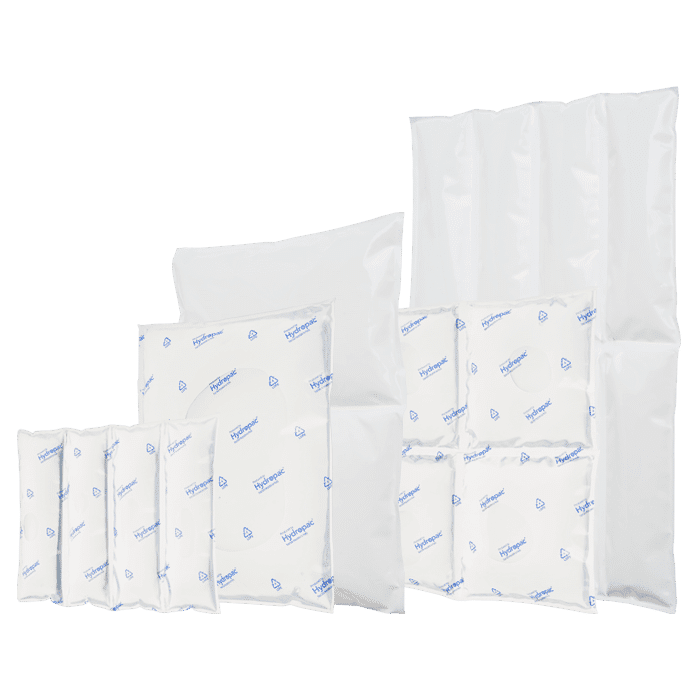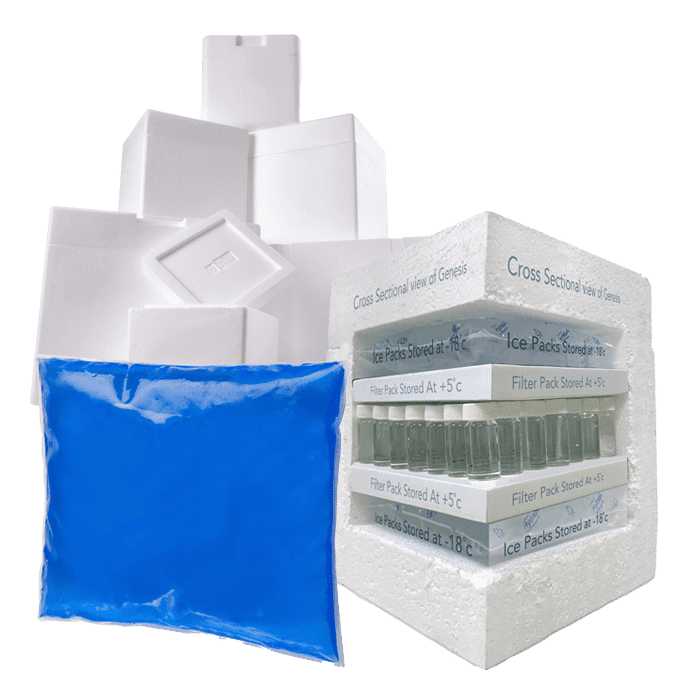Shipping food items properly
It is very important that any food being packed for delivery through the transit network is kept at a consistent temperature, is well protected and is shipped efficiently to ensure it reaches its end destination as quickly as possible and in excellent condition.
Depending on the foodstuffs in question, there are different requirements:
Custom chilled solutions for you
Hydropac offers every customer a customized solution for chilled and conditioned shipping. For example, we help a customer with limited freezing capacity to deliver gel packs frozen and ready to use, and we can manufacture almost all shapes and sizes of cooling elements. As a customer, you come first: we are here to help you.
Room temperature foods
Foods that can be shipped at room temperature, such as cupboard essentials, snack foods or drinks, do not require a chilled or frozen shipping solution, but still need to be packaged properly in order to stop them becoming damaged in transit.
Of course, there are also goods that do not require chilled shipping but may benefit from it anyway, such as chocolate or marshmallows, which may melt if they become too hot inside the packaging.
An optimum chilled shipping profile can be from 1-8ºC, ideally 5ºC.
Chilled foods
Chilled foods must be kept at a consistent chilled temperature throughout their entire transit journey, in order to stop them becoming too warm and risking spoilage. This includes items such as cheese, milk, yoghurts, certain fruits and vegetables and eggs.
An optimum chilled frozen shipping temperature needs to be below 0 ºC to around -15 °C.
Frozen foods
Frozen foods have to be kept at a consistent frozen temperature throughout the shipping process, from the moment they are packaged to the moment they are delivered and handed over to the end recipient. If they become too warm, they may defrost and spoil. This includes foodstuffs such as frozen meats, vegetables and ready meals.
Challenges of shipping food items
- Weather conditions – we can’t 100% predict the weather so whilst we can take steps to protect against adverse weather conditions, by using ice packs and insulating packaging, extreme heat or cold will always be a challenge.
- Humidity – spells of high humidity threaten frozen food in particular, as it can speed up the thawing process considerably.
- Damage in transit – it’s very important to use strong packaging materials and good inner fillers to keep your food items from moving around and potentially becoming damaged during transit.
- Spoilage – all 3 of the above elements can increase the risk of food spoilage, which is not only frustrating for the end recipient, but also dents profits as the order will need to be refunded/replaced.
Packaging food for delivery
Regardless of the type of food being couriered around, there are certain requirements that apply to all packaging.
-
- Make sure the items are wrapped properly so nothing can leak, spill or split apart
- Use packaging fillers to keep everything in place (we have a great piece on the most eco friendly options here)
- Remember that you may need to add labeling and classifications for different items – for example, if you are using dry ice as a coolant, the box clearly needs to be labelled as containing hazardous materials. If you want a safe alternative to dry ice, we can help with our HydroFreeze ice packs. You may also need to label the foodstuffs inside, depending on the courier in question.
- You may want to consider insurance options if you are shipping a high volume of goods in one container, or expensive items.
- Use sturdy, waterproof and leakproof outer packaging to protect against damages.
Sustainability Hydropac and CSR
Sustainability isn’t just a trend for us – it’s a promise. As we innovate, create, and lead, we keep our planet’s well-being at the forefront. With Hydropac, you’re not just preserving the quality of your cargo; you’re contributing to a healthier world.
Experience the power of sustainable temperature assurance with Hydropac – where excellence and environmental responsibility coexist for a brighter future.





